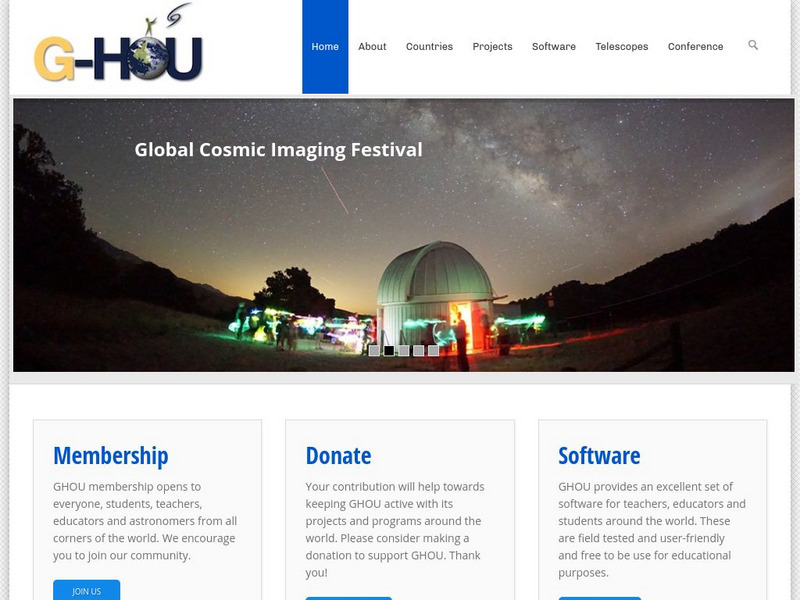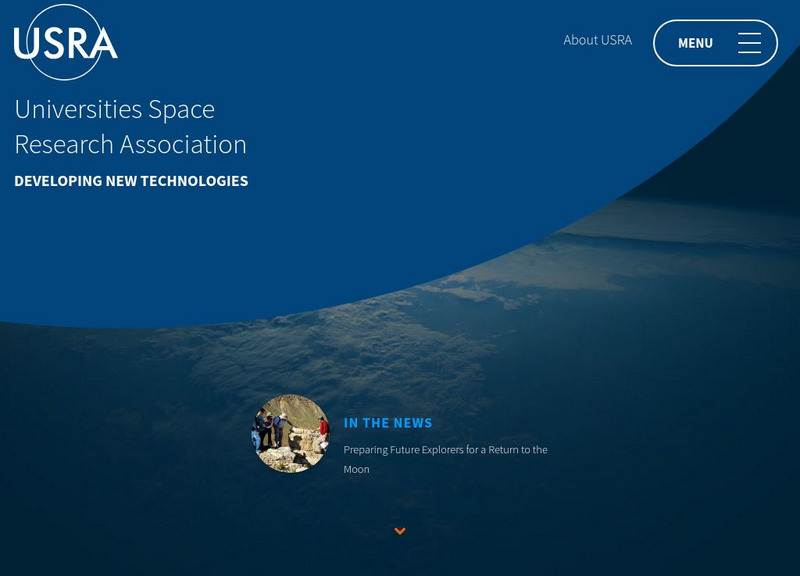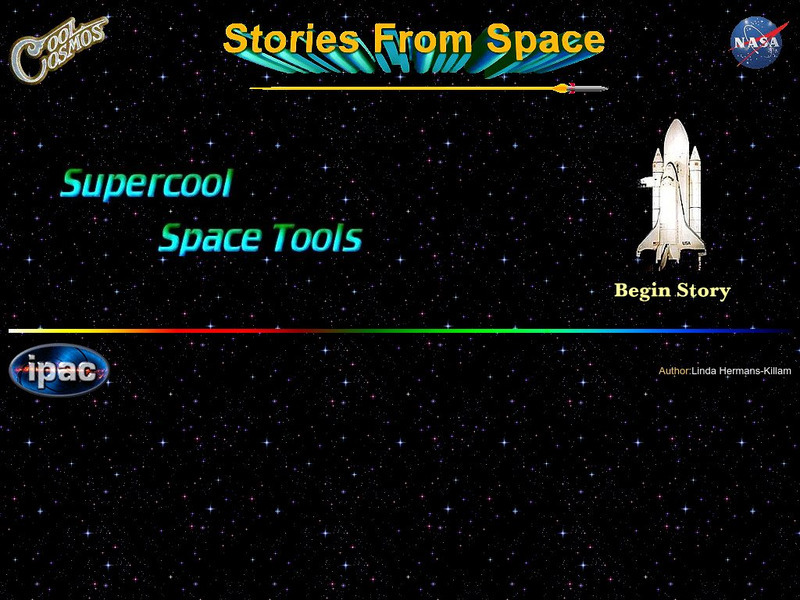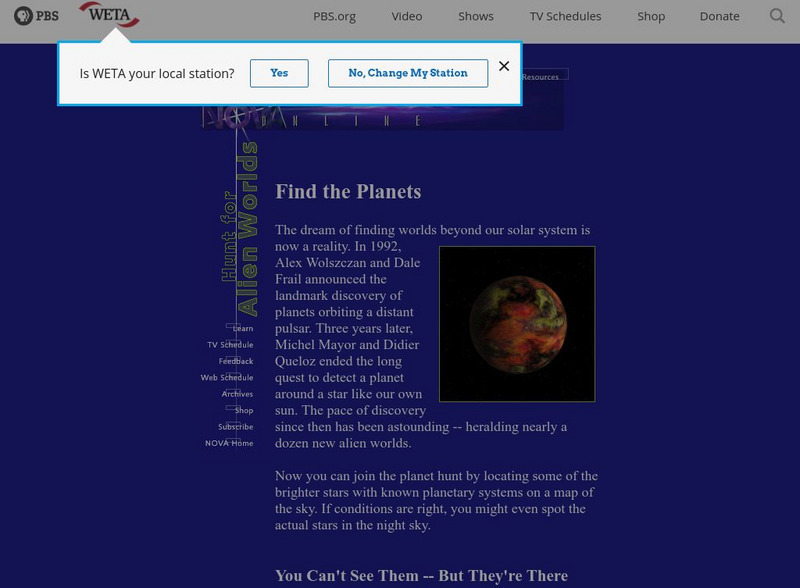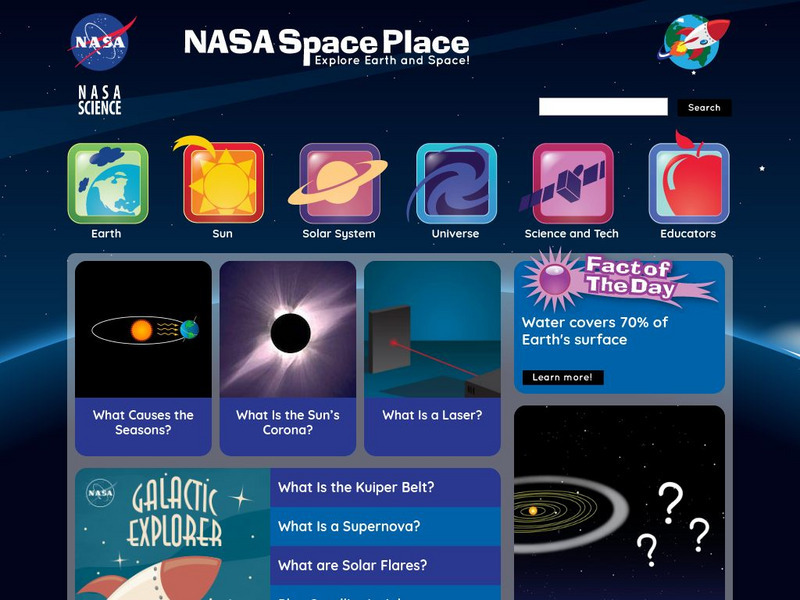Google
Google: Moon
An exciting new way to explore the Apollo moon missions, visit the moon on this interactive map and take a tour of each Apollo landing.
NASA
Nasa: Cobe: Cosmic Background Explorer
The Cosmic Background Explorer, or COBE, satellite began its space mission in November of 1989. Its task was to measure radiation levels from the early stages of the universe. This site explains the mission goals, COBE's specialized...
Other
University of Birmingham Astrophysics and Space Research Group
Homepage of the Unviersity of Birmingham School of Physics and Astronomy's Astrophysics and Space Research Group. This page has links to further information on astrophysical research, sofware development, space instrumentation, and more.
Other
Hands on Universe (Hou)
HOU trains teachers in how to use astronomy tools and its curriculum materials for science education. HOU is now part of GHOU, or Global Hands-On Universe, and is linked to astronomy scientists in countries all over the world. A world...
NASA
Nasa: For Educators
Contains many links to projects and workshops, as well as educational resources.
NASA
Nasa: Jet Propulsion Laboratory: Planet Quest: Exoplanet Exploration
Constellation of articles, images, diagrams, posters, videos, and more on the subject of the search for planets, particularly Earth-like planets, outside our solar system.
Other
Universities Space Research Association
The Universities Space Research Assocation was created as "an entity in and by means of which universities and other research institutions may cooperate with one another, with the Government of the United States, and with other...
NASA
Nasa: Space Station Science
A section of NASA's site that highlights the science activity taking place on the International Space Station. Read latest news and groundbreaking findings, and also learn about the careful planning and preparation that go into...
NASA
Nasa Ames Research Center
The homepage of the Ames Research Center is located in Silicon Valley and is geared towards creating new knowledge and new technologies that span the spectrum of NASA interests. The resource also contains or has links to information on...
CPALMS
Cpalms: Exploring the Future of Nasa
[Free Registration/Login Required] In this lesson plan, 8th graders analyze two nonfiction articles and a short video that look at NASA, changes to the space shuttle program, and future possibilities in the United States space program....
California Institute of Technology
Stories From Space: Supercool Space Tools
A great story highlighting the history of space discovery and the tools then and now. Learn about the tools and technology that help us in our quest to go beyond our planet and our solar system.
TED Talks
Ted: Ted Ed: Could Comets Be the Source of Life on Earth?
While comets were historically thought to be ill omens of war and famine, recent science has revealed that these celestial wonders actually contain amino acids, the building blocks of life on Earth. Justin Dowd explores the implications...
TED Talks
Ted: Ted Ed: How Cosmic Rays Help Us Understand the Universe
Veronica Bindi explains what cosmic rays are, and how they transmit information about our universe from the great beyond. [4:40]
TED Talks
Ted: Ted Ed: Is There a Center of the Universe?
It's been a long road to the discovery that Earth is not the center of the Solar System, the Milky Way, or the universe; great thinkers from Aristotle to Bruno have grappled with it for millennia. But if we aren't at the center of the...
TED Talks
Ted: Ted Ed: The Search for Other Earth Like Planets
Olivier Guyon examines the possibility of finding other planets within astronomical numbers, some potentially rife with life. [6:21]
TED Talks
Ted: Ted Ed: Life of an Astronaut
Astronaut Jerry Carr knows space. As commander of Skylab, he spent over 2000 hours in space, orbiting the Earth over 1000 times. Recounting his life story, Carr remembers the enchanting years he spent at NASA. [4:52]
TED Talks
Ted: Ted Ed: How Small Are We in the Scale of the Universe?
In 1995, scientists pointed the Hubble Telescope at an area of the sky near the Big Dipper. The location was apparently empty, and the whole endeavor was risky- what, if anything, was going to show up? But what came back was nothing...
Symmetry Magazine
Symmetry Magazine: Explain It in 60 Seconds: Dark Energy
Dark energy, described here, is the ultimate mystery for scientists. It is the force that is causing the expansion of the universe they believe. "Explain It In 60 Seconds" is an article series that aims to summarize in a few paragraphs...
PBS
Pbs: Find the Planets
Find out how astronomers locate new planets by observing the traits of the stars they orbit. Get some tips at locating stars with the help of star maps.
Space Telescope Science Institute
Space Telescope Science Institute: Hubble Space Telescope
Find out how astronomers are conducting extensive observations to estimate how many planets in our Milky Way galaxy might be potential abodes for life.
Other
Vibrationdata.com: Animal Astronauts
Information about some of the early animal astronauts who were launched into space to help determine the effects of space travel on human beings.
Other
Jules Verne Voyager: Solar System Portal
Take a look at the inner solar system, outer solar system and trans-Neptunian objects mapped in this portal. Explorers will find images from findings of space missions.
Other
Astromador: Astronomia Para Amadores
This resources focuses exclusively on astronomy. It's packed with historical facts about space exploration, famous people who pioneered the study of stars and planets. It features chronological list of space exploration, current news,...
NASA
Nasa: Space Place: Recipe for an Eco Sphere
Finf out about NASA-created self-contained living worlds inside closed glass containers.





